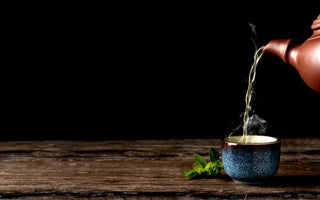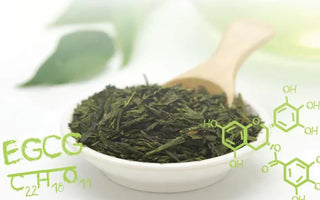
Green Tea Basics
Start with the basics. It's prudent for every green tea lover to have a good foundational knowledge of all things green tea, to begin with the kata (型) factor as you delve into Japanese green tea culture.
Kata (型) refers to the prescribed precise way of learning anything. Most people associate kata with karate, but it’s an element that’s inherent to general Japanese culture. There’s a proper order and manner of doing things.
If you're a new green tea aficionado, cover the basics by going through our collection of informative articles. Seasoned green tea drinkers can confirm their knowledge as well as pick up bits of information they may have missed before.

Tea for Allergies?! What is Benifuki Tea? - ChaCha's GreenTea Room Video
In this ChaCha's GreenTea Room video, learn about the calming benefits of tea for allergies. See how certain teas may give relief and comfort.

All Tea are the Same?! - ChaCha's GreenTea Room Video
What makes Japanese Sencha Green Tea different from English Breakfast Tea? There are so many different types of tea out there. What are the differences? Sencha, Matcha, Oolong Cha, Black Tea,...

What is Tea Cultivar?
Explore the enchanting realm of tea cultivars in Japanese tea. Discover unique flavors and unravel the secrets behind tea cultivation's art and science.

Everything You Need to Know about Eisai - The Father of Tea
Discover the fascinating story of Eisai, the Father of Tea. Explore his teachings, Zen Buddhism connection, and lasting influence on Japanese tea culture.

How to Select Japanese Green Tea? - The Expert Advice
Learn the secrets of picking the best Japanese green tea. To improve your tea-drinking experience, experiment with different types, tastes, and grades.

Everything You Need to Know about Covering Process for Matcha and Gyokuro
Learn the benefits and ways for darkening tea leaves during the covering process for matcha and gyokuro teas. Discover how it influences flavor and quality.

Everything You Need To Know About Water And Japanese Green Tea
Learn about the significance of water quality and temperature in producing the ideal cup of Japanese green tea. Learn the tea masters' secrets and enjoy the perfect cup every time.

What is the best Equipment For Cold-Brewing Japanese Green Tea?
In this article, we explore the best equipment for cold-brewing Japanese green tea, from pitchers to pods. Discover which method is right for you!

Which Tea Kettle Should I Use to Brew Japanese Green Tea?
When it comes to making a good cup of Japanese green tea, there are different factors to take into consideration. One factor is the tea kettle that is used to...

Top 7 Tea Books of All Time for Tea Lovers
Love tea? These 7 must-read books will deepen your knowledge, from history to brewing tips. Discover hidden secrets and expert insights on your favorite drink!

Green Tea Science Part 1: Polyphenols, Catechins and EGCG - 45 Commonly Asked Questions and How You Can Benefit
Although the popularity of green tea in the Western world is a fairly recent phenomenon, the highly beneficial nutrition value has enjoyed a favorable reputation throughout many parts of Asia...

Green Tea Science Part 2: Tannin, and Gallic Acid – 7 Commonly Asked Questions and How You Can Benefit
Uncover the fascinating world of tannin and gallic acid in Japanese tea. From taste to health benefits, explore the science behind these compounds.
